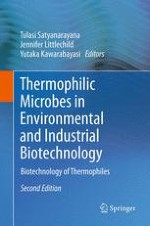2013 | OriginalPaper | Chapter
2. Exploring the Ecology of Thermophiles from Australia’s Great Artesian Basin During the Genomic Era
Authors : Christopher D. Ogg, Mark D. Spanevello, Bharat K. C. Patel
Published in: Thermophilic Microbes in Environmental and Industrial Biotechnology
Publisher: Springer Netherlands
Activate our intelligent search to find suitable subject content or patents.
Select sections of text to find matching patents with Artificial Intelligence. powered by
Select sections of text to find additional relevant content using AI-assisted search. powered by
